Chapter 11: Romanesque
0.0(0)
0.0(0)
Card Sorting
1/34
Study Analytics
Name | Mastery | Learn | Test | Matching | Spaced |
|---|
No study sessions yet.
35 Terms
1
New cards
Feudalism
a symbiotic connection between lords and peasants—dominated medieval life.
2
New cards
feminine handicrafts
Women were limited to "\___" including pottery, weaving, and manuscript decorating.
3
New cards
Cathedral
the principal church of a diocese, where a bishop sits
4
New cards
Rib vault
a vault in which diagonal arches form riblike patterns. These arches partially support a roof, in some cases forming a web-like design
5
New cards
Clerestory
the window story of a church
6
New cards
Triforium
A narrow passageway with arches opening onto a nave, usually directly below a clerestory
7
New cards
Bay
a vertical section of a church that is embraced by a set of columns and is usually composed of arches and aligned windows
8
New cards
Abbey
a monastery for monks, or a convent for nuns, and the church that is connected to it
9
New cards
Ambulatory
a passageway around the apse of a church
10
New cards
Apse
the end point of a church where the altar is
11
New cards
Campanile
a bell tower of an Italian building
12
New cards
Arcade
a series of arches supported by columns. When the arches face a wall and are not self-supporting, they are called a blind arcade
13
New cards
Baptistery
in medieval architecture, a separate chapel or building generally in front of a church used for baptisms
14
New cards
Compound pier
a gathering of engaged shafts around a pier
15
New cards
Gallery
a passageway inside or outside a church that generally is characterized by having a colonnade or arcade
16
New cards
Jamb
the side posts of a medieval portal
17
New cards
Narthex
the vestibule, or lobby, of a church
18
New cards
Portal
a doorway. In medieval art they can be significantly decorated
19
New cards
Radiating chapel
a chapel that extends out in a radial pattern from an apse or an ambulatory
20
New cards
Transept
an aisle in a church perpendicular to the nave
21
New cards
Transverse arch
an arch that spans an interior space connecting opposite walls by crossing from side to side
22
New cards
Reliquary
a vessel for holding a sacred relic. Often reliquaries took the shape of the objects they held. Precious metals and stones were the common material
23
New cards
Last Judgment
in Christianity, the judgment before God at the end of the world
24
New cards
Tympanum
a rounded sculpture placed over the portal of a medieval church
25
New cards
Mandorla
(Italian for “almond”) an almond-shaped circle of light around the figure of Christ or Buddha
26
New cards
Embroidery
a woven product in which the design is stitched into a premade fabric
27
New cards
Tapestry
a woven product in which the design and the backing are produced at the same time on a device called a loom
28
New cards
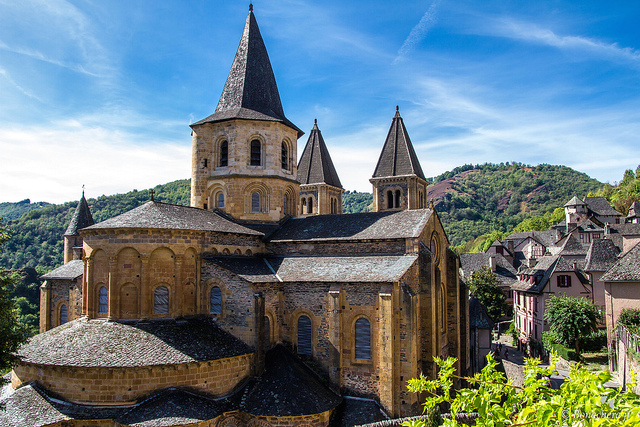
Church of Sainte-Foy
* Church built to handle the large number of pilgrims: wide transepts, large ambulatory with radiating chapels.
* Radiating chapels housed relics of the saints.
* Radiating chapels housed relics of the saints.
29
New cards
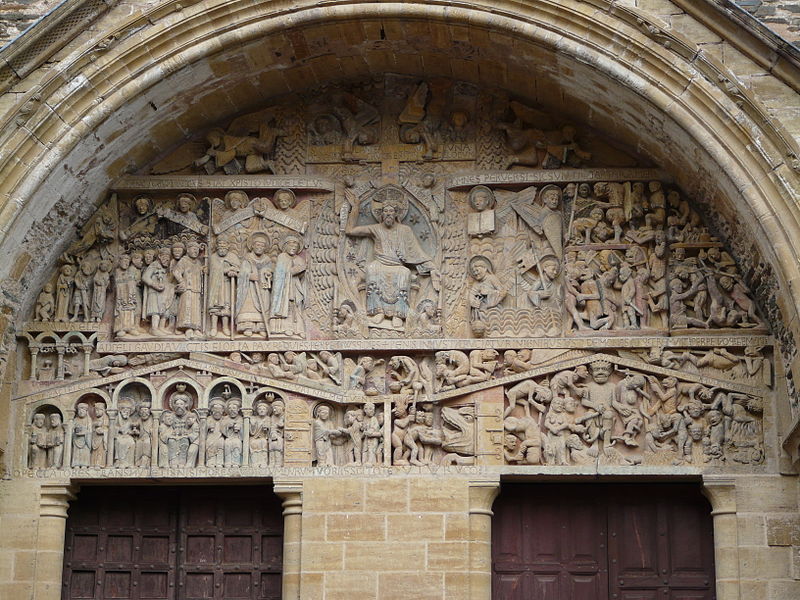
Last Judgment
* Largest Romanesque tympanum.
* 124 figures densely packed together; originally richly painted.
* cautions pilgrims that life is transitory and one should prepare for the next life.
* 124 figures densely packed together; originally richly painted.
* cautions pilgrims that life is transitory and one should prepare for the next life.
30
New cards
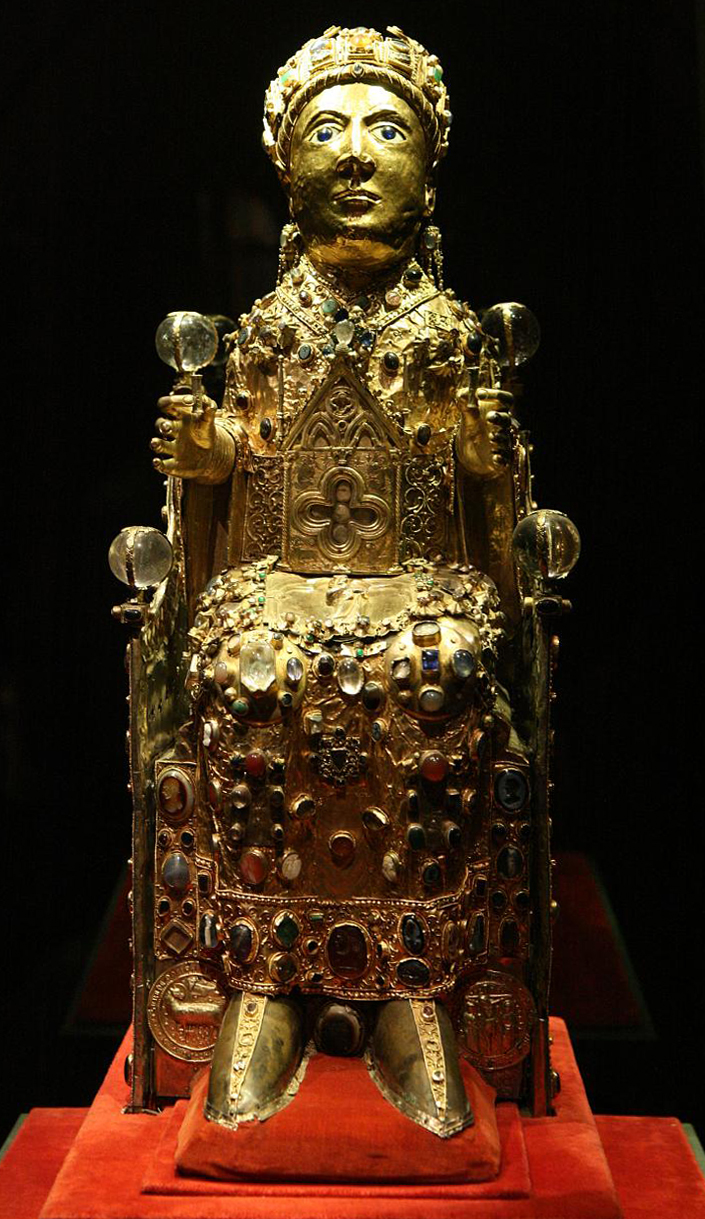
Reliquary of Sainte-Foy
* Child saint’s skull is housed in the rather mannish-looking enlarged head.
* Jewels, gems, and crown added over the years by the faithful, as acts of devotion.
* Reliquary of a young girl martyred in the early fourth century
* Jewels, gems, and crown added over the years by the faithful, as acts of devotion.
* Reliquary of a young girl martyred in the early fourth century
31
New cards
Sainte Foy (or Faith)
______ probably died as a martyr to the Christian faith during the persecutions in 303 under Emperor Diocletian; she was tortured over a brazier; she refused to sacrifice to the Roman gods in a pagan ritual.
32
New cards
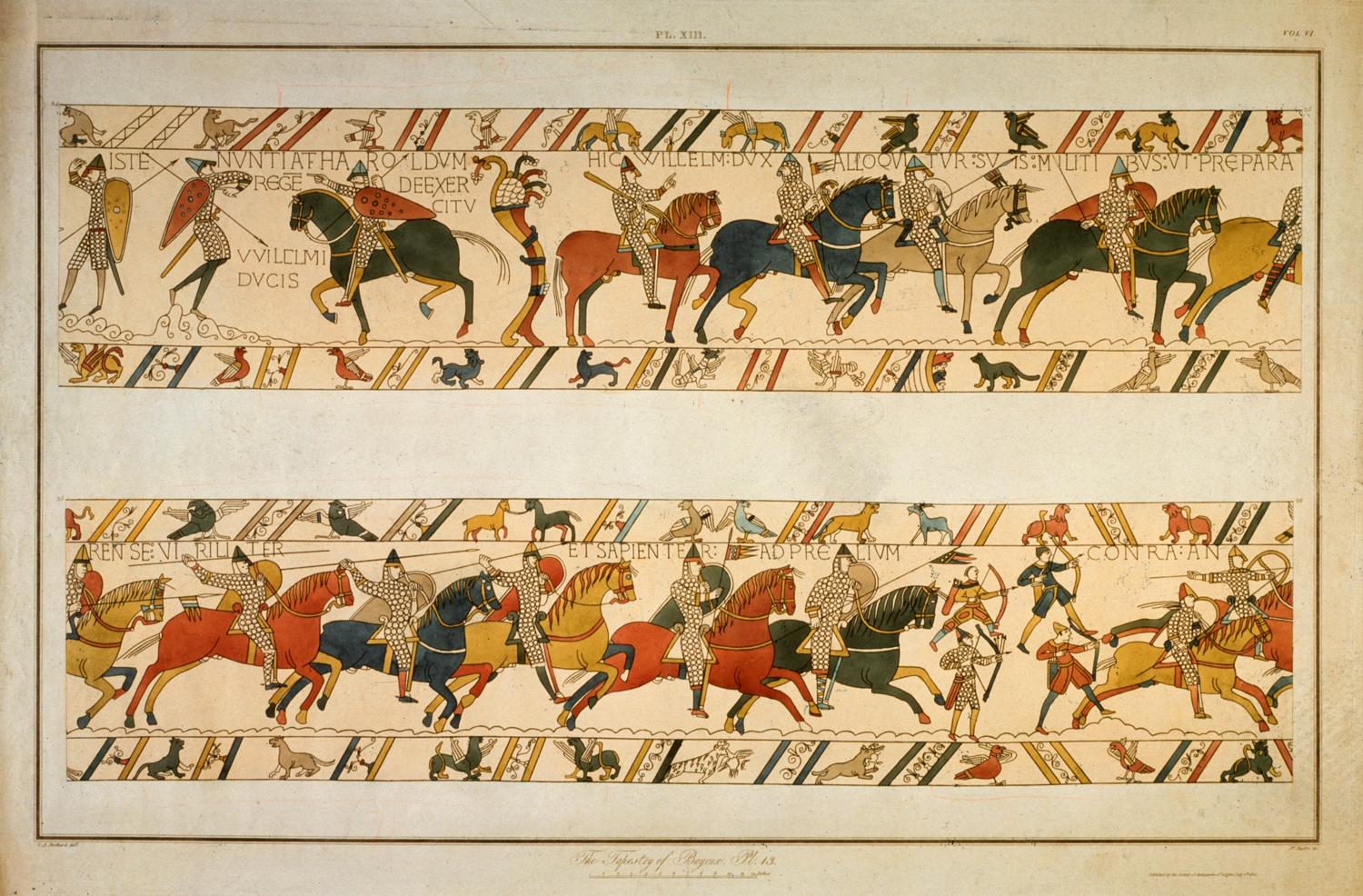
The Bayeux Tapestry
* Tells the story (in Latin) of William the Conqueror’s conquest of England at the Battle of Hastings in 1066.
* perhaps in a cathedral hung from the pillars in the nave or walls
* Probably designed by a man and executed by women.
* perhaps in a cathedral hung from the pillars in the nave or walls
* Probably designed by a man and executed by women.
33
New cards
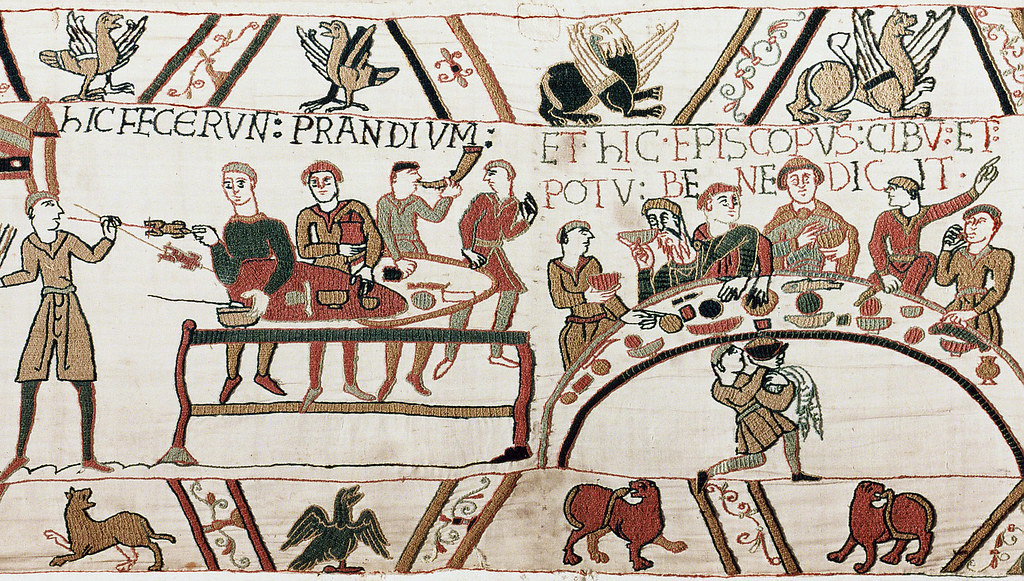
First meal from the Bayeux Tapestry
* Norman’s first meal in England, at the center is **Bishop Odo**, who gazes out as he offers a blessing over the cup in his hand.
34
New cards
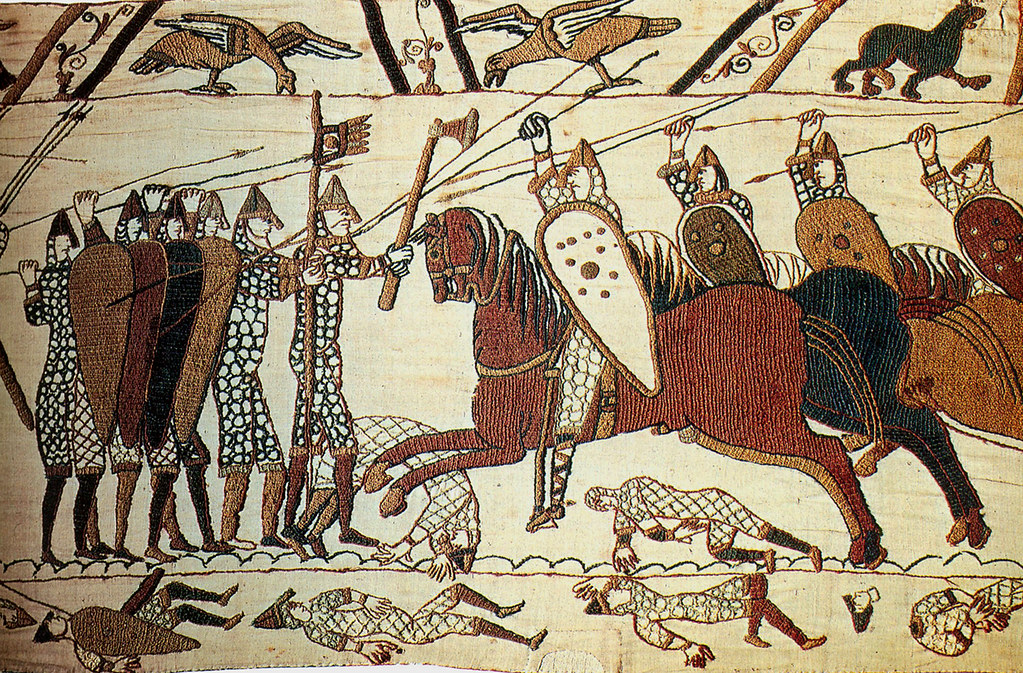
Cavalry attack from the Bayeux Tapestry
* The cavalry could advance quickly and easily retreat, which would scatter an opponent's defenses allowing the infantry to invade.
* It was a strong tactic that was flexible and intimidating.
* It was a strong tactic that was flexible and intimidating.
35
New cards
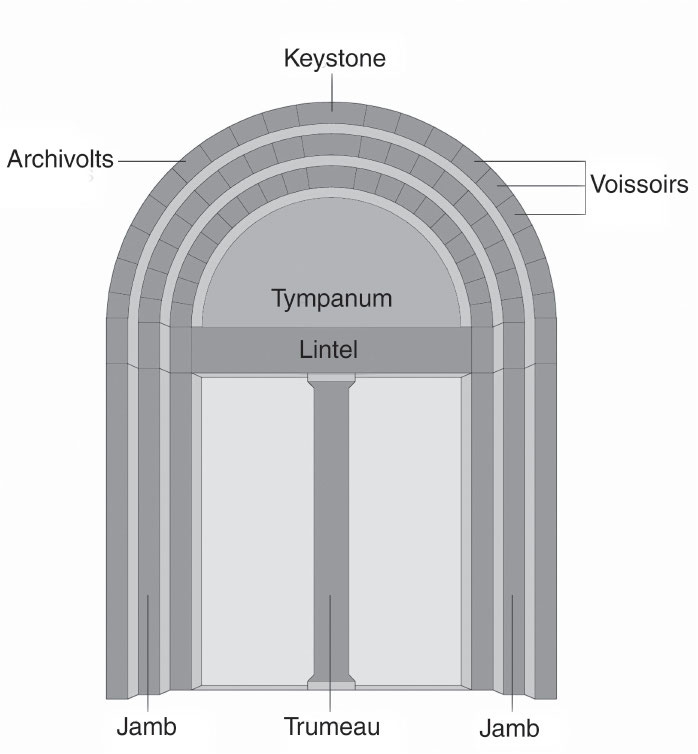
Romanesque portal
a doorway. In medieval art they can be significantly decorated